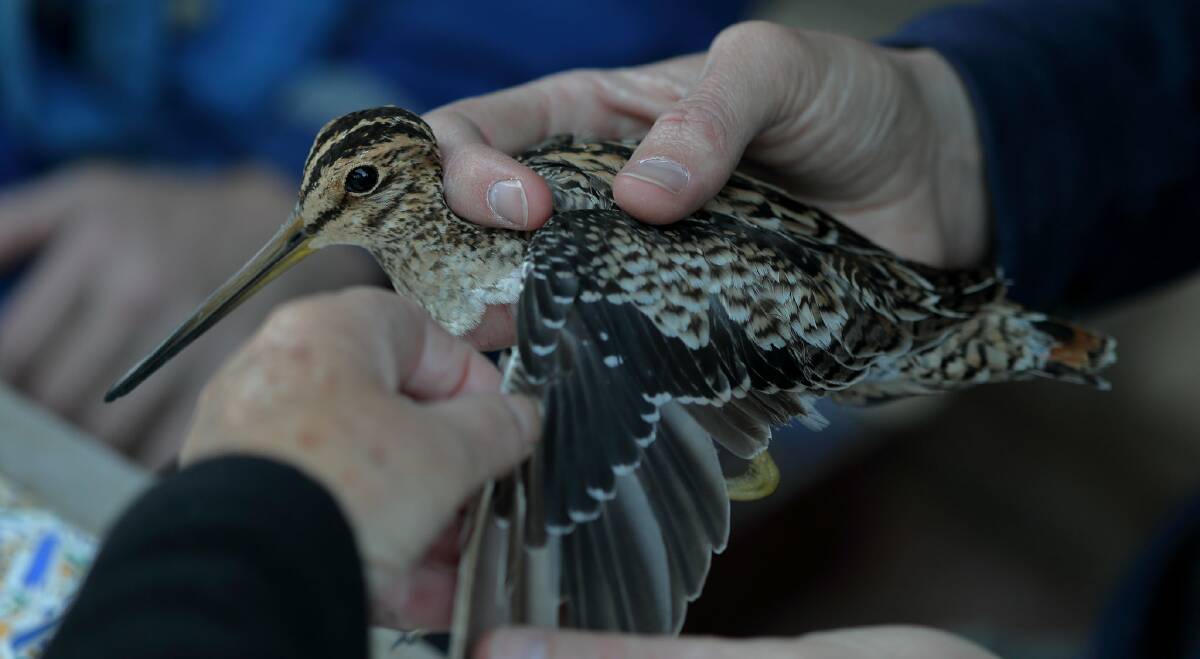
The bird in the accompanying photo recently flew non-stop from Japan to Australia – a distance of 7000km.
Subscribe now for unlimited access.
or signup to continue reading
A migratory wader known as Latham’s snipe, it breeds in Japan during our winter and moves here for the summer. It does not nest in Australia.
Earlier this spring, a snipe that had been fitted with a geolocator a year earlier was re-captured at Port Fairy.
It had travelled to northern Japan and back. The transmitter allowed the travel route of the snipe to be monitored. Surprisingly, it did not hug the Asian coast as it flew south, stopping once or twice in wetlands along the way.
Instead, it flew straight from Hokkaido to central coastal Queensland before moving down to its previous summer home at Port Fairy.
The transmitters are used to determine migration routes of the Latham’s snipe so any significant places for them can be protected.
Weights and measurements are taken while the birds are being handled. Discovering where they go, and why they choose specific locations, is an important part of the study.
A small group of enthusiasts monitors the Port Fairy snipe population.
They were doing so when Ballarat photographer Ed Dunens met them last month.
Latham’s snipe visits the Ballarat district every year, with special places favoured.
This year’s local sightings are few, probably due to the larger amount of flooded marshy ground available over a wider area than usual.
They feed on a wide range of material, including seeds, worms, insects and similar small creatures, which they locate by probing into soft mud with their sensitive, flexible-tipped bills.
Each year, I am amazed to see snipe that have returned to the Ballarat area after flying from Japan.
Their wingspan is about 50cm. They weigh only 150-200g, and most of them have already made the return trip to Japan more than once.
This is not only cause for admiration, but also a reason why we should protect the marshy places they need to survive while they are in our part of the world.
ORCHID SEASON
One of many orchids reported this season is the hare orchid (Leptoceras menziesii). This one is not seen every year, because it produces flowers mostly after summer fires.
A recent report was from unburnt bushland in the Haddon-Smythesdale area.
Another interesting orchid report involves numerous scented leek orchids (Prasophyllum odoratum) in Enfield State Park.
These also are usually more common after fires, but their patch has not been recently burnt.













